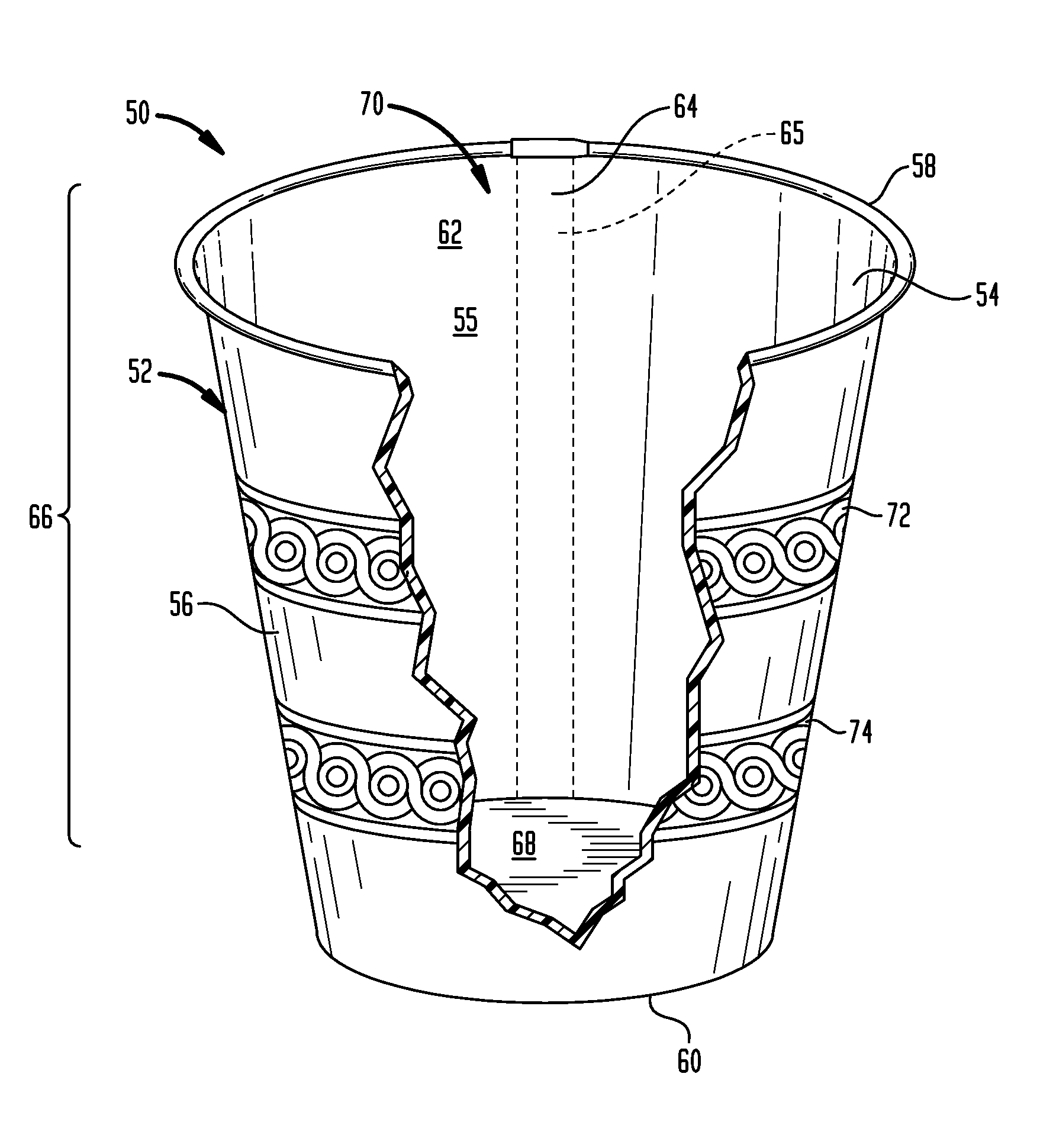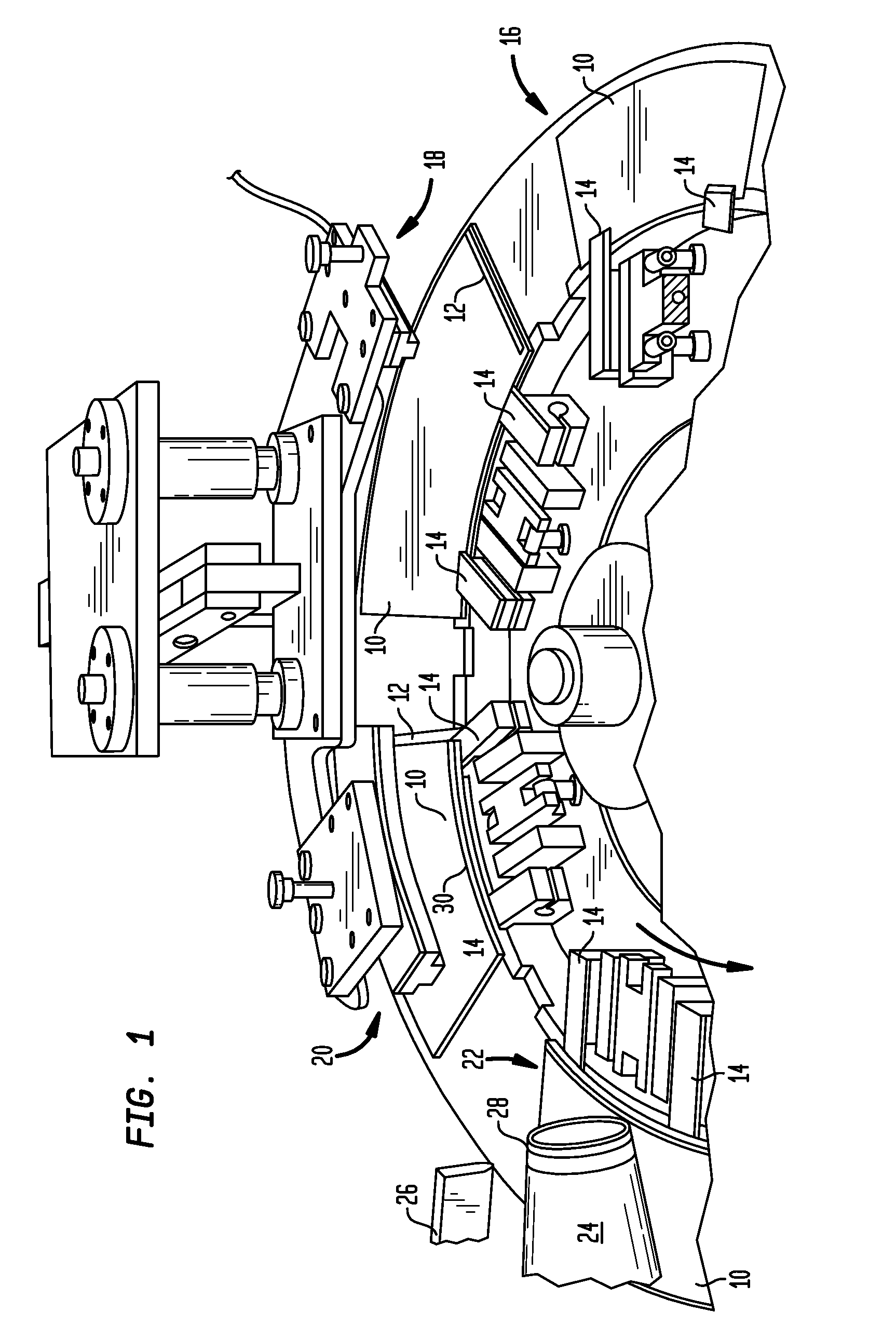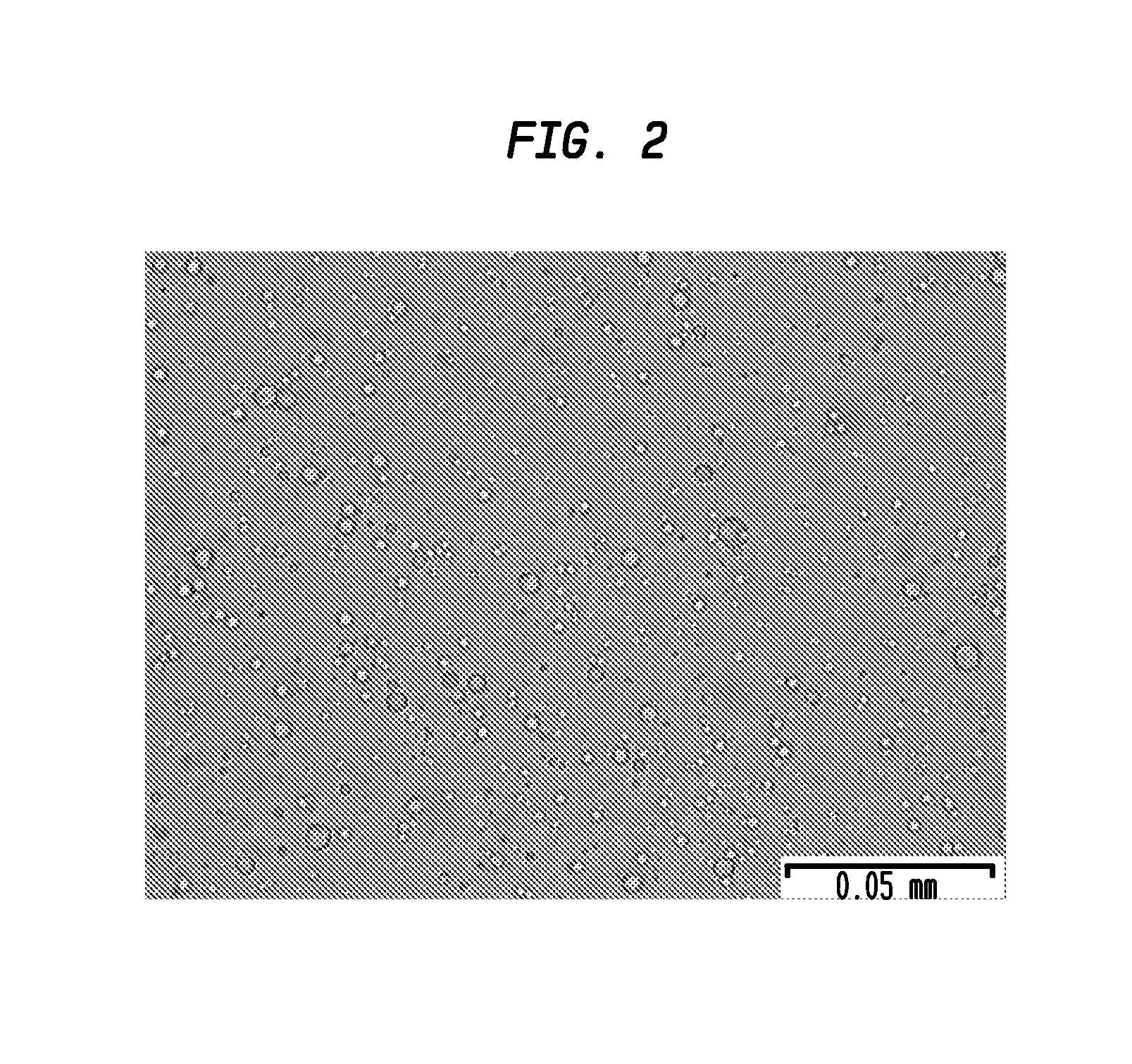Paper cup manufacture with microencapsulated adhesive
a technology of microencapsulation and paper cups, applied in the field of paper cups manufacture, can solve the problems of cup leakage, paper transfer from paper to mandrels after clamping, and potential misalignment at each processing station, and achieve the effects of eliminating glue application, improving sealing, and precise relative positioning
- Summary
- Abstract
- Description
- Claims
- Application Information
AI Technical Summary
Benefits of technology
Problems solved by technology
Method used
Image
Examples
first embodiment
[0054]There is thus provided in the invention a paperboard blank for forming a sidewall of a paper cup comprising a paperboard substrate having an interior portion corresponding to the inner surface of the sidewall of the formed cup and a seam portion corresponding to a sidewall seam area of the formed cup, wherein the seam portion of the blank is provided with a rupturable, microencapsulated adhesive composition in a non-adhesive state suitable for securing the sidewall seam upon rupture of microcapsules of the composition and activation of the adhesive.
[0055]Embodiment No. 2 is a paperboard blank of the first embodiment wherein the microencapsulated adhesive composition is a pressure and solvent-sensitive adhesive composition.
[0056]Embodiment No. 3 is any of the foregoing embodiments of the invention, wherein further, the adhesive composition is a water-sensitive adhesive composition.
embodiment
[0057 No. 4 is any of the foregoing embodiments of the invention, wherein further, the interior portion of the paperboard blank has a wax coating.
[0058]Embodiment No. 5 is any of the foregoing embodiments of the invention, wherein further, the microencapsulated adhesive is applied to the seam portion of the paperboard blank such that the microencapsulated adhesive is juxtaposed with the wax coating on the interior portion of the paperboard blank, such that the wax coating is substantially contiguous with microencapsulated adhesive over the seal length of the sidewall seam when the cup is formed.
[0059]Embodiment No. 6 is any of the foregoing embodiments of the invention, wherein further, the microencapsulated adhesive has a microcapsule size of from 2 microns to 200 microns.
[0060]Embodiment No. 7 is any of the foregoing embodiments of the invention, wherein further, the microencapsulated adhesive has a microcapsule size of from 5 microns to 100 microns.
[0061]Embodiment No. 8 is any o...
embodiment 16
[0070]Embodiment No. 17 includes the feature of Embodiment 16 and further includes of the invention is winding the web into a roll and removing the web from the coating line, followed by unwinding the roll prior to cutting the paperboard blanks therefrom.
[0071]Embodiment No. 18 of the invention includes the features of Embodiment Nos. 16 or 17 and further wherein the web is printed in the coating line on a second side thereof with a decorative pattern, the pattern thereby being applied in common registry with the liquid resistant coating and the microencapsulated adhesive in the coating line.
[0072]Embodiment No. 19 of the invention includes the features of Embodiment Nos. 16, 17 or 18 and further wherein there is provided in the coating line on the second side thereof a second decorative pattern, the second decorative pattern thereby being applied in common registry with the first decorative pattern, the liquid resistant coating and the microencapsulated adhesive in the coating line...
PUM
 Login to View More
Login to View More Abstract
Description
Claims
Application Information
 Login to View More
Login to View More - R&D
- Intellectual Property
- Life Sciences
- Materials
- Tech Scout
- Unparalleled Data Quality
- Higher Quality Content
- 60% Fewer Hallucinations
Browse by: Latest US Patents, China's latest patents, Technical Efficacy Thesaurus, Application Domain, Technology Topic, Popular Technical Reports.
© 2025 PatSnap. All rights reserved.Legal|Privacy policy|Modern Slavery Act Transparency Statement|Sitemap|About US| Contact US: help@patsnap.com



